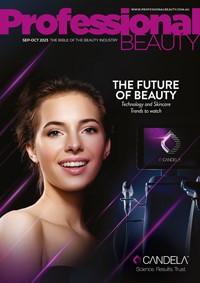By Paula Frewin
Conditions in the aesthetics industry have never been more dynamic, with tremendous change occurring in the last five years. However, the bottom line remains unchanged: clients demand results. While they may be prepared to stick with a product or treatment for a period of time to achieve results, they do so with the expectation that the products and equipment they are exposed to in the salon have been thoroughly researched.
Your clients are relying on and paying for, your expertise and experience and they expect you to keep abreast of the times. It would be no different if you were a car mechanic or dentist; like the beauty industry, both these industries are continually bombarded with new technology, products and techniques. It is therefore your job to do the research.
As a major supplier of equipment to both the overseas and Australian aesthetic industries, Body Clinic is heavily committed to providing equipment and technology that has been fully researched, ie. – it works, does what is says it does and gives results – and giving you, the therapist, enough education and training to fully exploit the technology. In turn, you must demand the same from your suppliers as your client demands from you. After all, you are at the frontline!
In our field of expertise we have been using LED (light-emitting diode) therapy for about the four years it has been part of the industry. However, it is only since 2005 that studies conducted by NASA in respect of light therapy and its effect on plants ( in order to provide a sustainable source of food) and the acceleration of the healing process (where prolonged exposure to microgravity may retard healing in space stations) have been published.
Determining how effective a particular LED therapy system is is simple – but only if you know the right questions to ask. Effectiveness is determined by the following factors and will dictate the treatment time and number required per week:
• Number of LEDs in the treatment head (the greater the number the better)
• Total size of the treatment area covered at the same time in either mm or cm2 (again the greater the better)
• Whether or not the head rotates backwards and forwards or remains in a static position (if the head is not static the LED light source is not constant, therefore increasing the amount of time it takes to achieve the critical 126j/cm2
• Output intensity of the system in W/cm2 (the higher the output intensity the more powerful the system)
• Pulsing – is the system able to pulse the light?
A good equipment supplier will have answers to all of these questions. The NASA studies also show that the skin more readily absorbs and utilises an LED light source if the light is sent in packets of photons – “pulsed” on and off – at specific intervals. In other words, the skin cell is much like the brain; it absorbs and retains things in bite-size “chunks”.
Studies also show that only four colours of the spectrum – red, yellow, green and blue – had any measurable, beneficial effect on human skin.
So what, if any, is the difference between laser/LPL and LED light therapy rejuvenation?
1) LED therapy offers a more complete coverage for a longer period of time. Treatment head sizes are around 218 cm2 (depending on the system) whereas, typically, the treatment head size of a laser/IPL is around 2 cm2.
2) Led therapy stimulates the cell for a longer period of time, typically anywhere from 10 minutes upward, depending on the output intensity of the system, whereas with laser/IPL the cell is only stimulated for a fraction of a second.
3) LED therapy offers completely hands-free operation. Laser/IPL treatments are highly labour-intensive.
4) LED therapy works with the skin, not against it.
5) LED therapy is non-thermal, non-ablative and non-invasive. No infra-red or ultra-violet light is used and, unlike laser/IPL, offers immediate results with virtually zero post-treatment problems.
6) With most LED systems, staff can be fully trained and operational in four hours. Laser/IPL training is far more intensive and over a longer period of time and unless undertaken prior to delivery, the system is not operational immediately.
7) No licence is required to use LED therapy equipment, neither does a laser safety officer need to be on the premises – because it’s not a laser!
In reading this, you have already begun your research into one aspect of modern-day aesthetic equipment. The rest is up to you.
For more information contact the Body Clinic on (07) 3822 6606.

